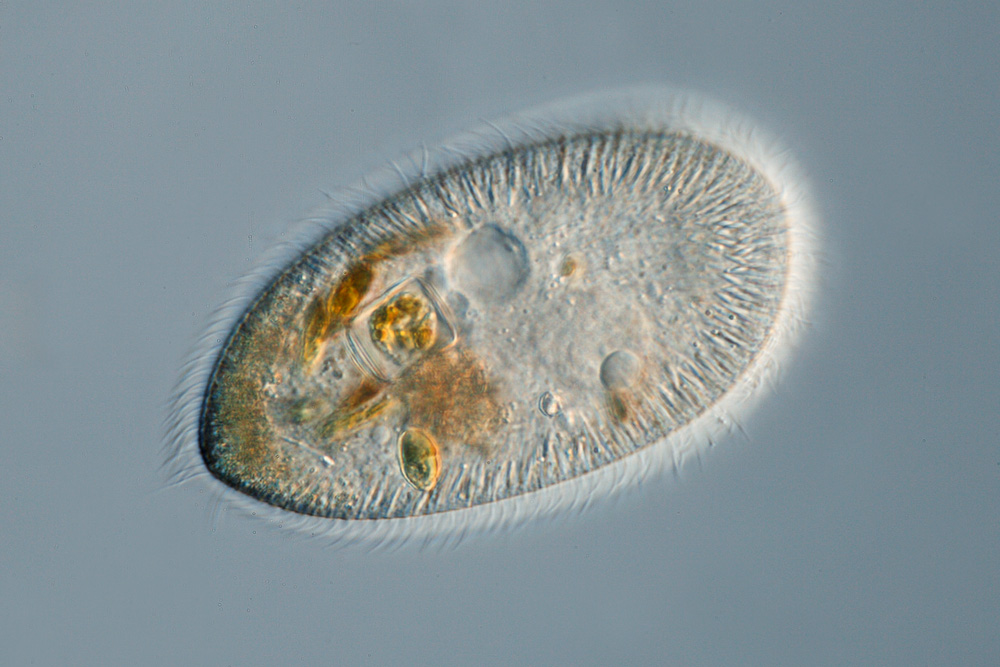Frontonia on:
[Wikipedia]
[Google]
[Amazon]
''Frontonia'' is a genus of free-living

 ''Frontonia'' species vary in length from 50 to 600 micrometres. Cell bodies are typically ovoid or elongate, and somewhat flattened from back to front. They are flexible, uniformly ciliated, and usually surrounded by
''Frontonia'' species vary in length from 50 to 600 micrometres. Cell bodies are typically ovoid or elongate, and somewhat flattened from back to front. They are flexible, uniformly ciliated, and usually surrounded by
Image:Frontonia leucas.jpg
Image:Frontonia vernalis -- from Ehrenberg.jpg
File:Frontonia ingesting a diatom.ogg, ''Frontonia leucas'' ingesting a diatom
File:Frontonia atra.ogg, ''Frontonia atra'' has symbiotic bacteria in its cytoplasm
File:Frontonia leucas.ogv, ''Frontonia leucas'', radiating canals around contractile vacuole
File:Frontonia vernalis.ogv, ''Frontonia vernalis'' carries symbiotic algae in its cytoplasm
unicellular
A unicellular organism, also known as a single-celled organism, is an organism that consists of a single cell, unlike a multicellular organism that consists of multiple cells. Organisms fall into two general categories: prokaryotic organisms and ...
ciliate
The ciliates are a group of alveolates characterized by the presence of hair-like organelles called cilia, which are identical in structure to eukaryotic flagella, but are in general shorter and present in much larger numbers, with a differen ...
protists
A protist () is any eukaryotic organism (that is, an organism whose cells contain a cell nucleus) that is not an animal, plant, or fungus. While it is likely that protists share a common ancestor (the last eukaryotic common ancestor), the ex ...
, belonging to the order Peniculida. As Peniculids, the ''Frontonia'' are closely related to members of the genus ''Paramecium
''
''Paramecium'' ( , ; also spelled ''Paramoecium'') is a genus of eukaryotic, unicellular ciliates, commonly studied as a representative of the ciliate group. ''Paramecia'' are widespread in freshwater, brackish, and marine environments and ...
''. However, whereas ''Paramecia'' are mainly bacterivore A bacterivore is an organism which obtains energy and nutrients primarily or entirely from the consumption of bacteria. The term is most commonly used to describe free-living, heterotrophic, microscopic organisms such as nematodes as well as many s ...
s, ''Frontonia'' are capable of ingesting large prey such as diatoms, filamentous algae, testate amoebas, and even, in some circumstances, members of their own species. In bacteria-rich saprobic
Saprotrophic nutrition or lysotrophic nutrition is a process of chemoheterotrophic extracellular digestion involved in the processing of decayed (dead or waste) organic matter. It occurs in saprotrophs, and is most often associated with fungi ( ...
conditions, ''Frontonia leucas'' can live as a facultative bacterivore.
''Frontonia'' are widely dispersed, and members of the genus can be found in marine and freshwater environments on every continent.
Appearance and characteristics

 ''Frontonia'' species vary in length from 50 to 600 micrometres. Cell bodies are typically ovoid or elongate, and somewhat flattened from back to front. They are flexible, uniformly ciliated, and usually surrounded by
''Frontonia'' species vary in length from 50 to 600 micrometres. Cell bodies are typically ovoid or elongate, and somewhat flattened from back to front. They are flexible, uniformly ciliated, and usually surrounded by trichocyst
A trichocyst is an organelle found in certain ciliates and dinoflagellates.
A trichocyst can be found in tetrahymena
''Tetrahymena'', a unicellular eukaryote, is a genus of free-living ciliates. The genus Tetrahymena is the most widely studie ...
s. The small oral aperture is pear-shaped, and located in the anterior half of the cell. Along the left side of the opening there are three membranelle Membranelles (also membranellae) are structures found around the mouth, or cytostome, in ciliate
The ciliates are a group of alveolates characterized by the presence of hair-like organelles called cilia, which are identical in structure to e ...
s, and the right has a single paroral membrane. The mouth is supported by inconspicuous microtubular
Microtubules are polymers of tubulin that form part of the cytoskeleton and provide structure and shape to eukaryotic cells. Microtubules can be as long as 50 micrometres, as wide as 23 to 27 nm and have an inner diameter between ...
rods (nematodesmata), and may expand during feeding to as much as two-thirds of the cell's length.
The cytoplasm of some species, such as ''Frontonia atra'' and ''Frontonia acuminata'', can be darkly pigmented.
Classification
The genus ''Frontonia'', created by C. G. Ehrenberg in 1838, includes some thirty named and described species. In 2008, analysis of small subunit rRNA gene sequences confirmed the close relationship of several members of the genus: ''Frontonia leucas,'' ''F. vernalis,'' ''F. tchibisovae,'' ''F. lynni.'' However, ''Frontonia didieri'' was found to be related more closely to a species from another genus, ''Apofrontonia dohrni.'' This result calls into question themonophyly
In cladistics for a group of organisms, monophyly is the condition of being a clade—that is, a group of taxa composed only of a common ancestor (or more precisely an ancestral population) and all of its lineal descendants. Monophyletic gr ...
of the genus ''Frontonia'', and also casts doubt on the morphological criteria used to distinguish ''Apofrontonia'' from it.
Image gallery
Video gallery
List of accepted species names
References
{{Taxonbar, from=Q5506111 Oligohymenophorea Ciliate genera Taxa named by Christian Gottfried Ehrenberg Articles containing video clips